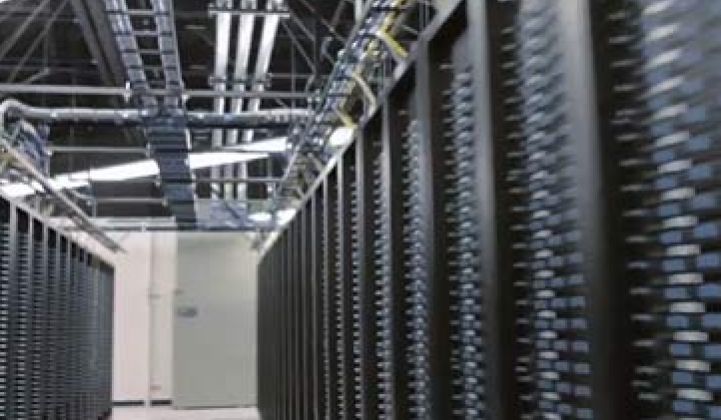Facebook has just taken a bit of internal data center energy efficiency wizardry and made it available to the world. On Thursday, it opened access to the minute-by-minute power-use effectiveness (PUE) and water-use effectiveness (WUE) scores via dashboards for its Prineville, Ore. and Forest City, N.C. data centers, and promises to have its next super-efficient data center in Luleå, Sweden on-line soon.
For the social networking giant, it’s another stage in its push to green its image and to convince more data center operators to talk openly about their efficiency efforts, as well as an attempt to get critics like Greenpeace off its back for still using coal-fired power. But it’s also an interesting chance to highlight the relative value of such real-time, big-data efforts to squeeze the hardest-to-reach efficiencies out of an already super-efficient set of assets.

Let’s start with the caveats first. While Facebook’s current dashboards are indeed tracking changes in PUE and WUE on a minute-by-minute basis, those tracking lines are all on a 2.5-hour delay. That’s better than its former quarterly reports, but still not technically real-time.
Whether or not Facebook’s data center operators have access to faster data is beside the point. Surely they do, at least for their individual operating systems, such as power delivery gear, HVAC and IT asset management. But turning all those numbers into one single figure like PUE isn’t a real-time operating task; it’s a data collection and analysis task.
That’s because power-use effectiveness represents a ratio of total power use to the share of power used by cooling systems, power conversion, and all other non-IT assets in a data center. Typical data centers have PUEs from 2 to 3, which means they’re using as much as -- sometimes nearly twice as much -- power for non-IT operations as they’re using for their servers.
Facebook, Google, Apple, Yahoo, IBM, Microsoft, Cisco, Intel, HP and other IT giants that have taken the lead in data center efficiency have been able to drive down PUE in some showcase projects to 1.5 or as close as 1.1, meaning that they’re using almost all of their power for IT, and almost none of it for everything else. Of course, that's an average figure -- some days are hotter than others, giving rise to the fluctuations in Facebook's day-to-day metrics.
But those super-efficient scores are coming out of projects designed from the ground up with the latest and greatest in efficient cooling systems (and often in cold climates), as well as expensive custom integration on the IT side that just isn’t reasonable for the average data center owner/operator to take on. To reach larger markets, data center efficiency technologies will need to come in the form of commercially scalable products, platforms and services, rather than well-funded showcase projects.
Players in the data center efficiency space range include the aforementioned IT giants, as well as power equipment giants such as Siemens, Schneider Electric and ABB, Trane, Emerson. On the smaller-company and startup front, we’ve got a long list of contenders such as RF Code, PowerAssure, SynapSense, JouleX, Sentilla and Vigilent (formerly Federspiel Controls) that have technology to help sensor, monitor and manage both building equipment assets and IT assets, as well as marrying those two sides of the data center into a useful single platform.
Facebook has pledged to open-source all of its data-center efficiency efforts via its Open Compute Project, which could see its in-house innovations find useful life out in the larger world of IT efficiency. It’s also teamed up with its share of partners, including some early work with data center sensor company SynapSense, as well as Redwood Systems, which has supplied its power-over-Ethernet LED lighting and environmental control system in its Prineville data center.
At the same time, Facebook’s transparency is far from complete. Note, for example, that its new dashboards don’t give any actual power use or cost figures, only PUE and WUE ratios (as well as temperature and humidity). That leaves actual costs and benefits up to the imagination.
In any case, it’s nice for Facebook to share the data.



